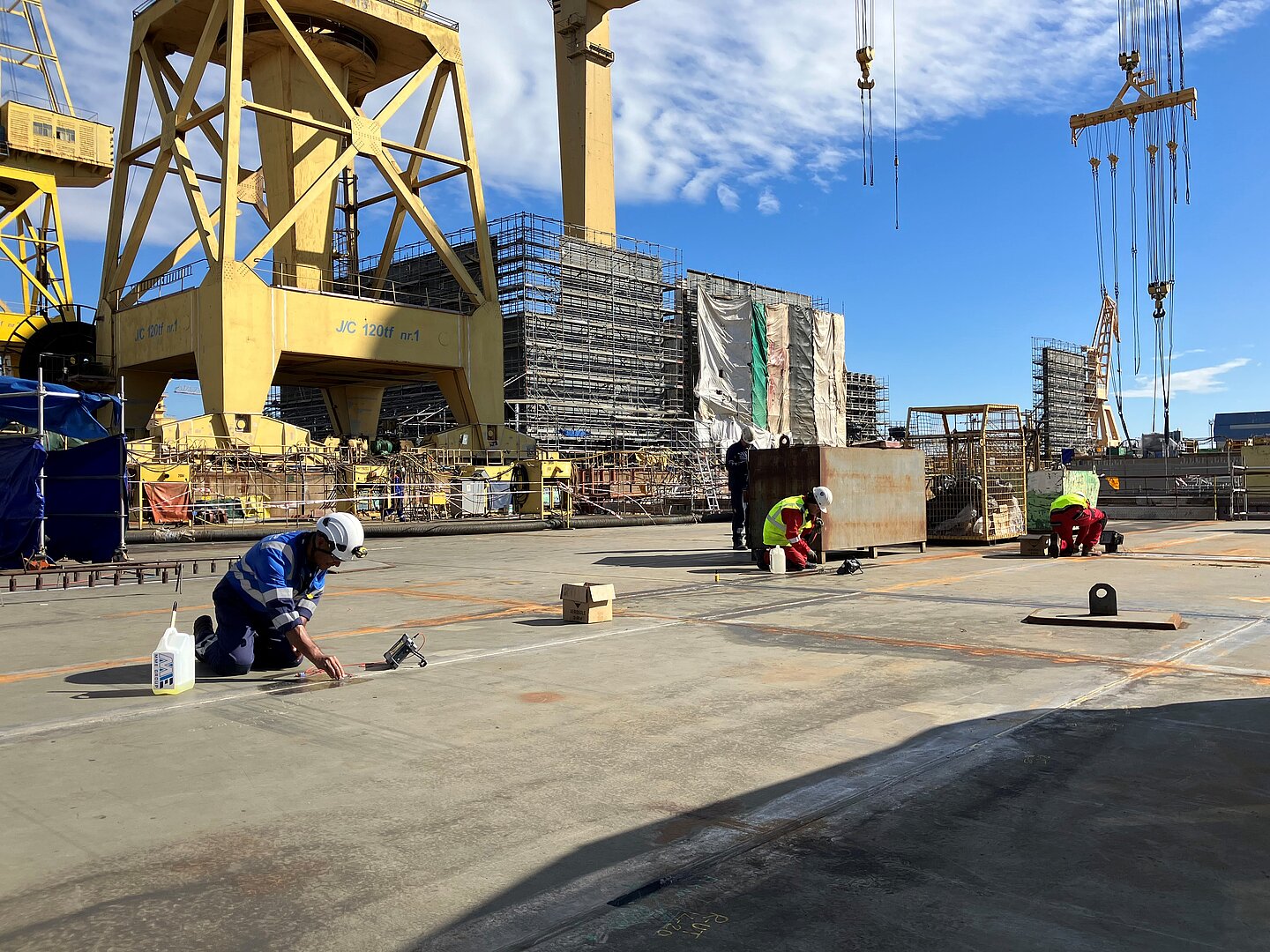Case BKRS
Making sure heavy lifting gear meets the highest standards
Read more
Ultrasonic Testing is a volumetric Non-Destructive Testing (NDT) method. Unlike surface inspection methods, UT makes it possible to find flaws inside the material. High-frequency sound waves are sent into the material with an ultrasonic transducer. The ultrasound that reflects off defects in the material is made visible in a graph. Ultrasonic Testing gives insight in the depth, size, nature and orientation of the detected indications. The thickness of the material, such as wall thickness of pipes, can also be measured. MME Group has decades of experience in applying UT inspections across all industrial sectors.
Contact us if you have a question or want to receive a quotation!
In industrial applications, UT is widely used on metals, plastics, composites, and ceramics with a sufficiently homogenic structure. The only materials that are not suitable for ultrasonic testing with conventional equipment are wood and paper products.
This method can be used to find cracks, laminations, shrinkage cavities, gas holes, slag inclusions, incomplete fusion, incomplete penetration and lack of bonding in a wide variety of materials.
On a microscopic level, even polished materials have a rough surface. This means that there will be tiny air cavities between the ultrasonic probe and the test piece which do not conduct the ultrasound. By applying a couplant (usually water, a water based gel or oil) we create a perfect sound conducting connection between the probe and the test piece. This guarantees interference-free test results.
